Ausschnitt aus dem Karlsruher Stadtplan, 1934, Badisches Landesmuseum © Badisches Landesmuseum, Foto: ARTIS – Uli Deck
Injustice & Profit
The Badisches Landesmuseum in the period of National Socialism
Seemingly unsuspicious – for a long time, that was the role ascribed to Museums during the NS-period. More still – they were considered “victims” because of the state-ordered removal of objects (“corrupted art”). But in 1998, the “Washington Conference on Nazi-Confiscated Art in the time of the Holocaust” realization set in: All museums and institutions preserving cultural possessions could be proven to have profited from the theft of cultural goods from Jewish ownership. The Badisches Landesmuseum is now facing up to its past.
The exhibition shows about 70 objects from its own collections: ceramics, painting, sculptures and textiles from antiquity to Art Nouveau. The objects presented for the first time were all illegally taken from their owners during the NS-period. They make clear the extent to which the Badisches Landesmuseum profited from the robbing of Jewish citizens. The focus is on the years 1933 to 1945. But two purchases from the 1970s are also presented.
Another theme of the exhibition is the function of the museum as a powerful visual backdrop. The former residence palace was at the center of political actions of the NS regime and the palace façade and the plaza before it were used for proclamations. Moreover, the configuration of the exhibition illustrates the task of the research into provenance: enlargements of newspaper excerpts, seizure lists and press photos explain the source and provide important hints in following the clues, which often proceeded over years.
A publication will accompany the exhibition (Nünnerich-Asmus Verlag & Media, 127 pages with numerous illustrations, Museumshop 24 euros, German).
Picture Gallery
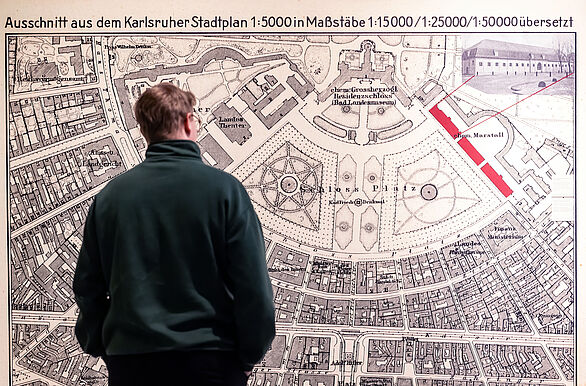
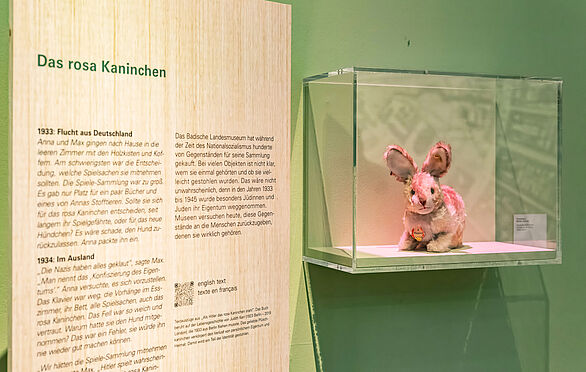
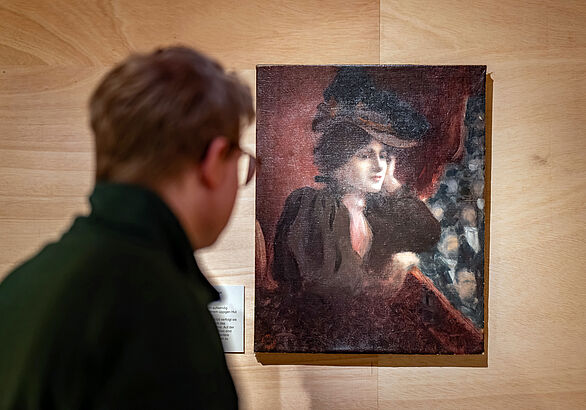
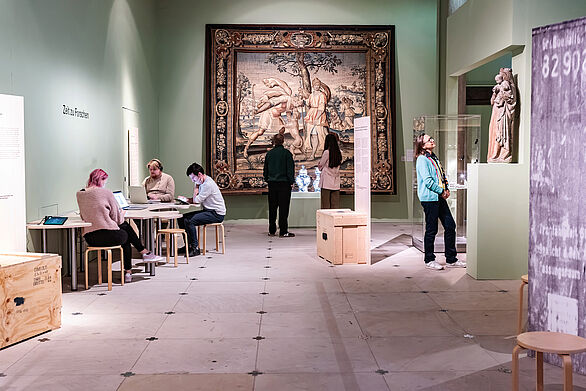

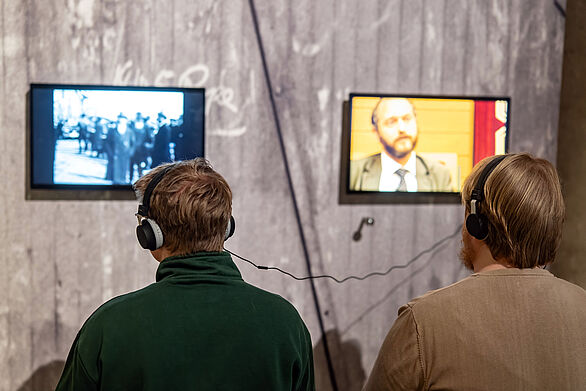
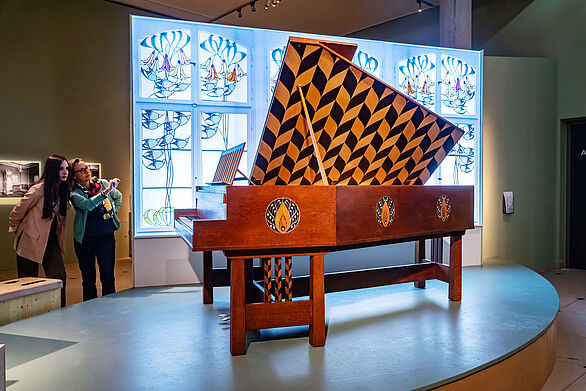
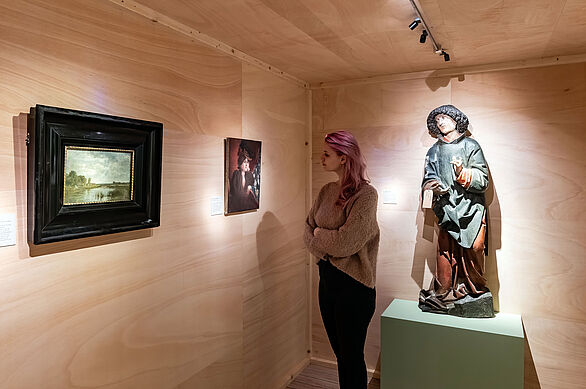

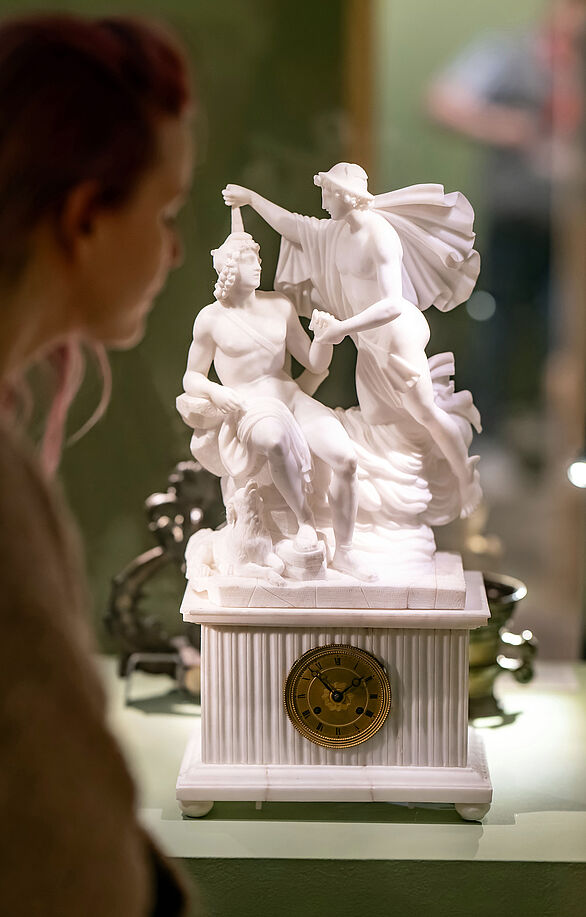
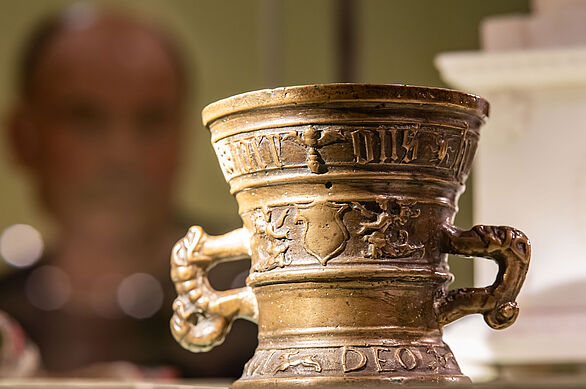
Das rosa Kaninchen: Textauszug aus dem Buch „Als Hitler das rosa Kaninchen stahl“, Plüschhase, Margarete Steiff GmbH, Giengen an der Brenz, 1960er Jahre, Leihgabe aus Privatbesitz © Badisches Landesmuseum, Foto: ARTIS – Uli Deck
Dame in der Theaterloge: Ölfarbe, Leinwand; Deutschland (?), um 1900, Badisches Landesmuseum © Badisches Landesmuseum, Foto: ARTIS – Uli Deck
Wandbehang, Ausstellungsimpression: Wolle, Seide, Leinen; Manufacture nationale des Gobelins Paris, um 1620; Der Wandbehang stammt aus der 2021 an die Erben restituierten Sammlung von Dr. Ernst Gallinek. Badisches Landesmuseum © Badisches Landesmuseum, Foto: ARTIS – Uli Deck
Puppen-Kaffeeservice, Porzellan, bemalt, Porzellanmanufaktur Meissen, Mitte 19. Jahrhundert. Das Service wurde vermutlich 1940 auf einer Versteigerung gekauft. Badisches Landesmuseum © Badisches Landesmuseum, Foto: ARTIS – Uli Deck
Film-Station, Ausstellungsimpression: 1) Zeitgenössische Dokumentation „Ehrentage der NSDAP“ produziert von der Gaufilmstelle der NSDAP Baden, 1934. 2) Filmische Interpretation des Buches „Kaddisch für Ruth“ durch Katharina Zarth und Marc Eberhardt aus dem Jahr 2013. © Badisches Landesmuseum, Foto: ARTIS – Uli Deck
Konzertflügel: C. Bechstein; Berlin, 1902/1905; Entwurf: Mackay Hugh Baillie Scott; Eiche, Zinn, Perlmutt; Der Flügel befand sich einst im Musiksalon der Villa von Dr. Richard Kahn-Starré (1862–1945) in Mannheim. Die Ausstattung des Salons wurde um 1905 nach Plänen von M. H. Baillie Scott (1865–1945) gestaltet. Das Museum erwarb den Flügel im Jahr 1971 von der Karlsruher Loge „Leopold zur Treue“. Badisches Landesmuseum © Badisches Landesmuseum, Foto: ARTIS – Uli Deck
Ausstellungsimpression „Unrecht & Profit“, Blick auf eine Skulptur und zwei Gemälde: Der Container verdeutlicht den Entzugskontext der „Mannheimer Lifts“: Die Objekte stammen aus Umzugsgut deportierter jüdischer Bürgerinnen und Bürger. © Badisches Landesmuseum, Foto: ARTIS – Uli Deck
Die Münzsammlung von Clara Sigmann-Seidel: Clara Sigmann-Seidel (1886-1965) übergab die Münzsammlung ihres verstorbenen Mannes unter Zwang als „Schenkung“ an das Münzkabinett des Badischen Landesmuseums. Die leeren Münzpappen sind sowohl Zeugnisse des unrechtmäßigen Entzugs als auch ihrer Restitution an die rechtmäßige Eigentümerin. Badisches Landesmuseum © Badisches Landesmuseum, Foto: ARTIS – Uli Deck
Kaminuhr mit Skulpturengruppe: „Paris und Hermes“ (Parisurteil), Alabaster, Messing; Frankreich oder Italien, um 1830; 1941 aus dem Kunsthandel erworben. Badisches Landesmuseum © Badisches Landesmuseum, Foto: ARTIS – Uli Deck
Mörser mit Inschrift: Bronze, Wilhelm Hachmann; Kleve, 1580; Der Mörser ist mit den Inschriften „int.iaer.ons.heren.m.vc.lxxx“ [Im Jahre unseres Herrn 1580] und „IN.DEO.SPES.MEA.“ [Meine Hoffnung liegt in Gott] versehen. 1942 aus dem Kunsthandel erworben. Badisches Landesmuseum © Badisches Landesmuseum, Foto: ARTIS – Uli Deck
The Badisches Landesmuseum shows events from the National Socialist era. In the context of the exhibition, historical sources can be seen unchanged in the original. We expressly distance ourselves from the ideology of National Socialism and from illegal and discriminatory content of any kind that is reproduced in this exhibition.